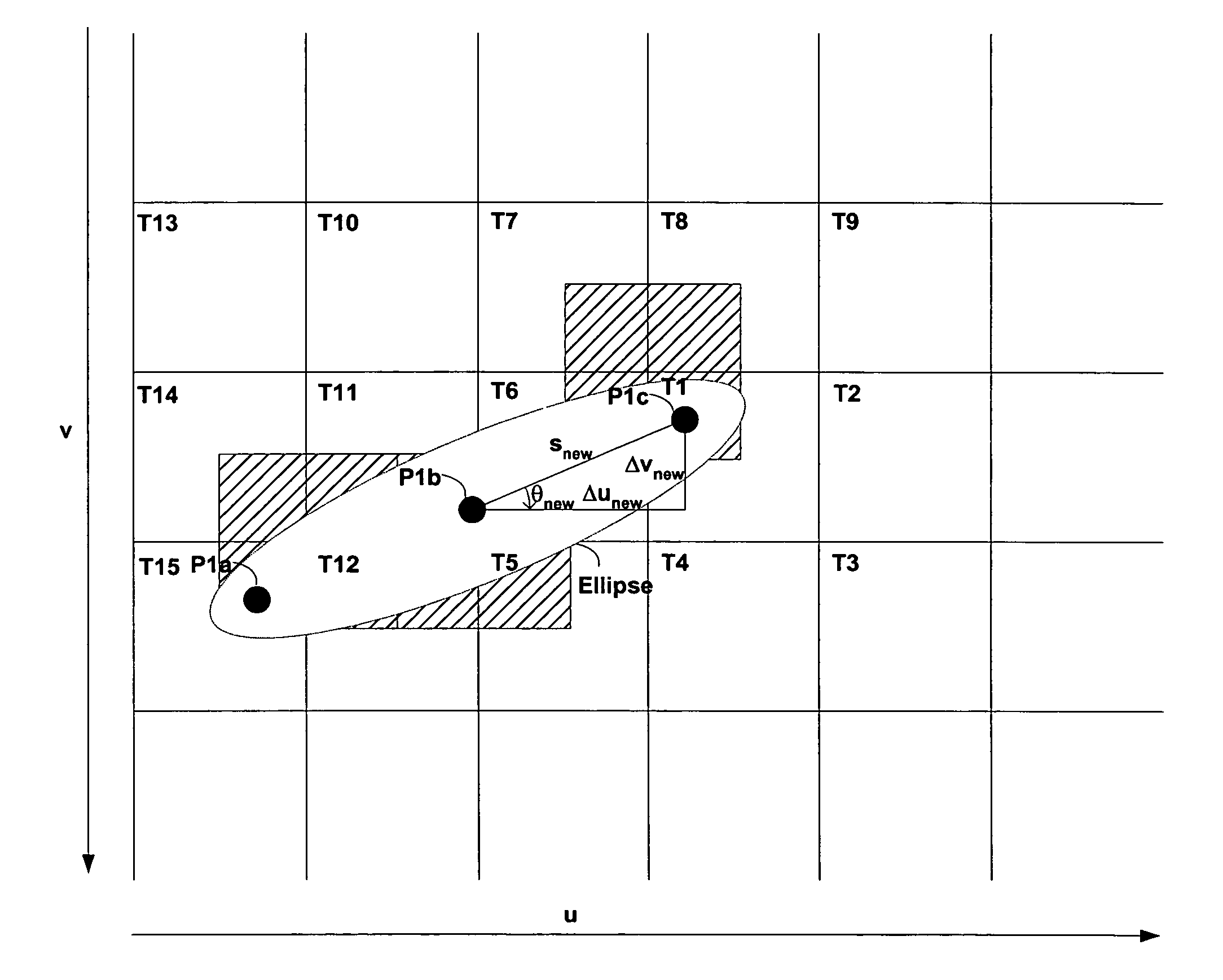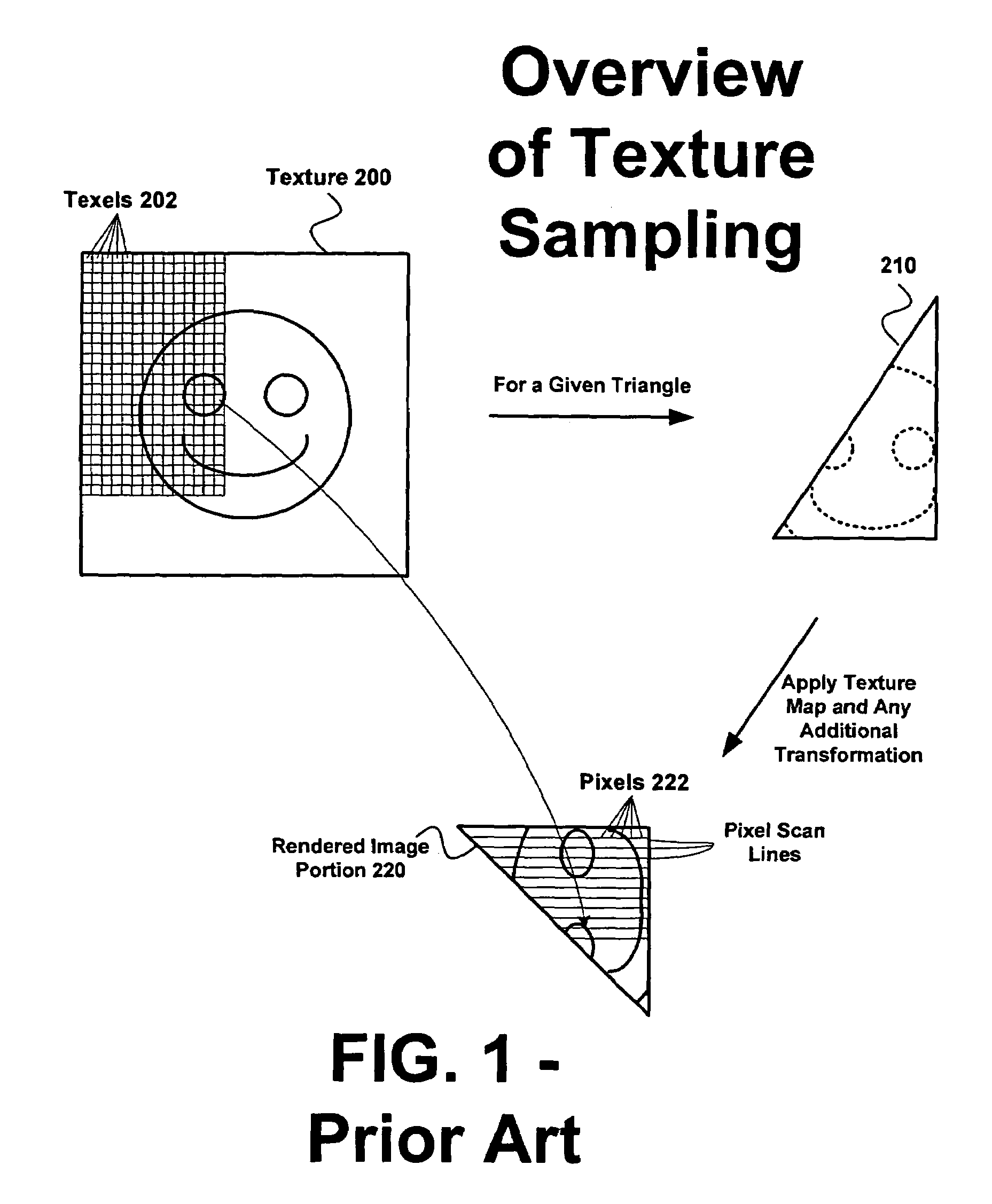Systems and methods for providing controllable texture sampling
a texture sampling and control technology, applied in image enhancement, instruments, computing, etc., can solve the problems of texture mapping not being able to effectively map proper image detail, sampling issues arise, display quality issues can arise, etc., to achieve the effect of increasing the level of realism in rendering
- Summary
- Abstract
- Description
- Claims
- Application Information
AI Technical Summary
Benefits of technology
Problems solved by technology
Method used
Image
Examples
Embodiment Construction
Overview
[0054]A mechanism for providing controllable texture sampling is provided that enables 3-D accelerator hardware to greatly increase the level of realism in rendering and opens the way towards use of ray-tracing computations in 3-D hardware. Up until now, such methods have been restricted to software renderers working with a host processor, greatly slowing the graphics pipeline. In this regard, currently, 3-D graphics chips have a unit called a sampler that is used to extract the color out of a texture on a polygon during rendering. Since the positions of the pixels being rendered do not generally correspond exactly to the positions of the texels in the texture, there is some work involved. Texture sampling can function with various levels of sophistication using techniques described in the background, such as point sampling, bilinear filtering, MIP-mapping and anisotropic filtering, as well as other techniques. Such prior art techniques have fixed aspects to them, which do n...
PUM
 Login to View More
Login to View More Abstract
Description
Claims
Application Information
 Login to View More
Login to View More - R&D
- Intellectual Property
- Life Sciences
- Materials
- Tech Scout
- Unparalleled Data Quality
- Higher Quality Content
- 60% Fewer Hallucinations
Browse by: Latest US Patents, China's latest patents, Technical Efficacy Thesaurus, Application Domain, Technology Topic, Popular Technical Reports.
© 2025 PatSnap. All rights reserved.Legal|Privacy policy|Modern Slavery Act Transparency Statement|Sitemap|About US| Contact US: help@patsnap.com



